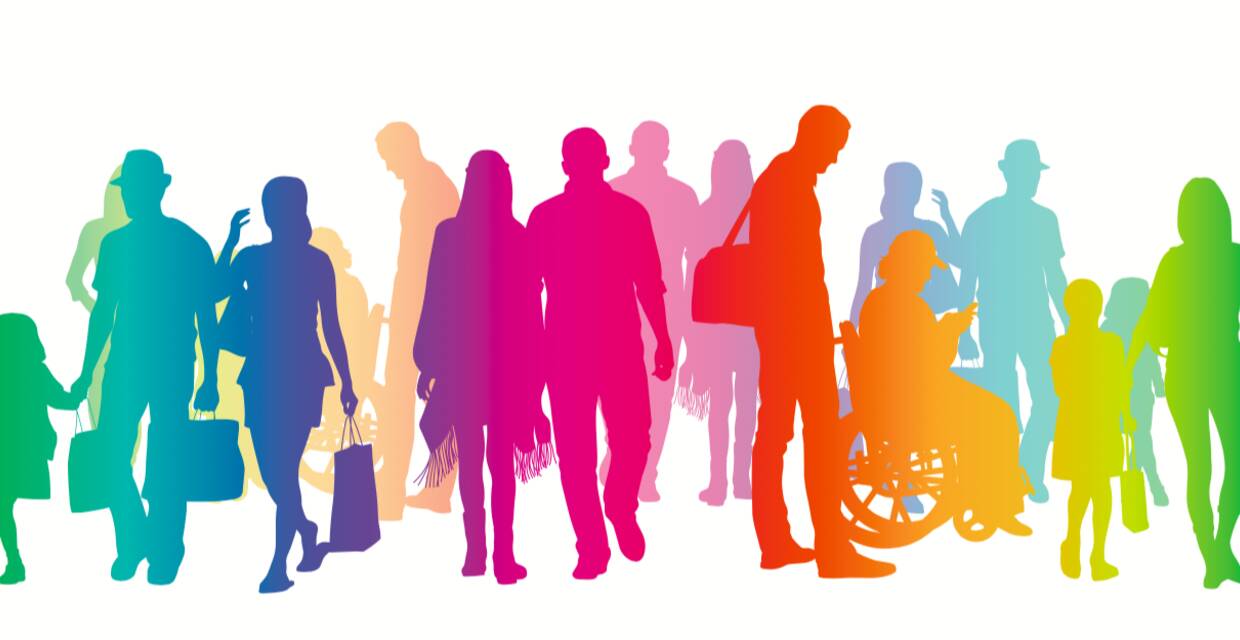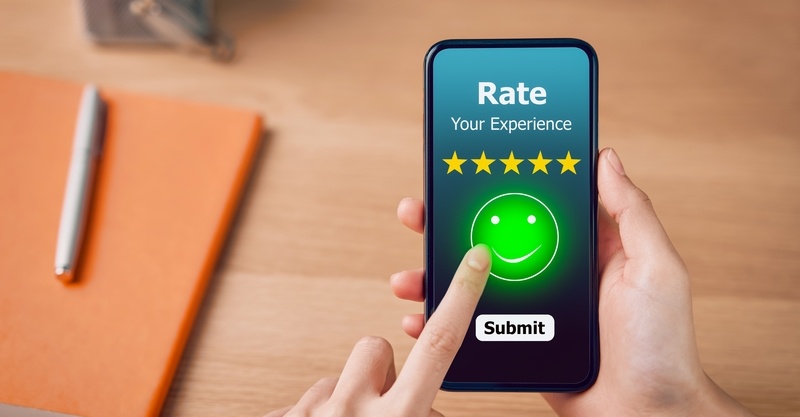Healthcare is a prime concern for individuals of all ages. The world is in constant change, so unsurprisingly, the mindset and habits of consumers change with it. For instance, these days, there's increasing importance put on technology, the growing population, and costs.
So, for healthcare providers to successfully connect with consumers and identify what matters to them, it's vital to acknowledge the differences between the generations.
For example, an older patient might not respond to tech-focused services as much as a younger one. To help you please every patient, we've outlined the key themes pertaining to the different generations and how their mindset affects their relationship with healthcare.
The Impact of Generations
When we want to understand just how much influence the new generation has on current consumerism, we don’t need to look any further than this: Millennial Pink.
Look it up! Chances are you’re familiar with the color. It's been around for a long time, hovering between names like light pink, rose, and salmon. Due to its increased popularity in recent years, Millennial pink has been used to define the marketing and fashion of the younger generation.
Companies like Disney, LaCroix, Thinx, and soul cycle have all capitalized on the popularity of the color. So much so, it’s become a newsworthy phenomenon.
There are 9.3 million millennials out there, with a combined spending power of $3.39 trillion. And they're not only consumers - Millennials have created and influenced multi-billion dollar companies such as Snapchat, Pinterest, Etsy, and Airbnb.
The Millennial generation is defined by their ease of access to consumer goods. On-demand media, fast food, online shopping, and faster-than-ever travel have shaped the younger generation’s understanding of consumption.
Where does healthcare fit into this? Let’s examine the impact on convenient care!
To meet the needs of this new cohort, some urgent care centers have built their strategies around this 'instant-access' culture. Retail clinics like Zoomcare are based in urban cities with dense millennial populations such as Portland and Seattle.
They've embraced the culture with hip clinics by using apps that connect consumers with healthcare professionals fast and from the comfort of their homes.
Carolinas healthcare system is another example of innovative 'convenient care,' inspired by Millennials. It informs consumers where their nearest hospital or urgent care center is. By making this service accessible on mobile devices, they meet their needs through technology they're already using daily.
More urgent care clinics cater to the millennial desire for individuality and fast, on-the-go service.
This is deeply ingrained in the clinic experience provided by Solv’s partner, Multicare: “We cater to the individual on the go.” That’s the motto!
While the media’s opinion on Millennials is mixed; there's no denying they're a subgroup of consumers to bear in mind while designing healthcare services.
But what about other generations?
It's true that as more millennials enter the healthcare industry, services are catering more towards this generation. But as innovations in this area keep pushing forward, there are other generations to consider that might interact with healthcare service in a very different way.
We haven’t forgotten about those generations either. Keep reading to learn what defines older generations and what they expect from their healthcare providers.
Baby Boomers
The Baby Boomer generation entered the world just after World War 2, between 1946 and 1964. They were raised in an era of prosperity. Couples began having an average of 2.4 children per family, which led to a massive increase in population, amounting to 78.8 Million in 1999.
Traditionally, boomers display a strong work ethic and are disciplined and self-assured. After all, their parent's generation experienced times of war and hardship, and as a result, boomers had to work hard to rebuild a better society. As a result of the struggles of their generation, they tend to place great value on self-development and personal responsibility.
How Baby Boomers interact with technology and healthcare
Baby Boomers are not tech-free. Far from it!
- 20% of Baby Boomers use wearables
- 82.3% are on Facebook
- 57% have visited a website
- 56% browse online
- 41% visited the store
- 19.9% call directly.
As an aging population, Boomers require more from the system. They are diligent. While they seek advice from physicians, they'll follow up with their own research.
Not to mention, 74% think virtual care is more convenient, and 40% think it better fits their schedule.
Gen X
Born between 1965 and 1979, this generation accounts for 65.7 million people.
Sandwiched between Baby Boomers and Millennials, Gen X grew up with the fall of the Berlin Wall, higher divorce rates and both-working parents. As a result, they grew up to be independent. They're resilient and appreciate honesty
In terms of tech, here are the stats:
- 95% of Gen X is on Facebook
- 74% use internet banking
- 72% use the internet to research products
Nearly 75% of Gen-X’ers identify themselves as the primary healthcare decision-maker in their family. Hence, they're a critical generation to reach. They care about transparency when it comes to healthcare services, and they're heavily cost-focused. They want to make educated but quick decisions.
Millennials
Let's circle back to Millenials for a sec. Millennials are born between 1980 and 1996 and make up 92.1 million people. Here are some of their insights on healthcare:
- 85% of millennials believe wellness is about balancing mind, body, and soul.
- 72% fear the healthcare system won't support them.
- 78% feel health is an aspect of their lives they can control
- 81% believe in the importance of preventative care.
- 64% of millennials consider on-demand access to healthcare more critical than on-demand video or food delivery.
- 50% don’t have a regular relationship with a primary care physician
- 50% of moms said they needed medical care after hours.
Millennials enjoyed childhoods full of positive feedback and encouragement to nurture their dreams and passions. Where previous generations met more hardship in, they raised hopeful optimism in their children.
Millennials, however, face mounting student debts, higher than ever house prices and historic levels of unemployment. As such, there's a lack of trust in institutions and an attitude of 'taking matters into their own hands.'
Key Insights to build from
- There’s a 24-day average wait to see a primary care physician.
- Negative experiences and misuse of ER
- Healthcare costs are rising and uncertain. Rising healthcare costs are a concern for consumers as they worry that future healthcare systems might not support them.
- No night and weekend options
For many people, it's challenging to see healthcare experts during the day. There are few options to receive healthcare at night or during the weekend, making scheduling a great difficulty when it comes to seeing a PCP.
There's a growing need for convenience!
In a world that's increasingly fast-paced and demands quick decision making, convenient healthcare services are crucial for getting consumers to engage with clinics and for building trust with the healthcare system. To do this, consumers need to be efficiently and transparently informed and benefit from fast access to experts.
So ask yourself - are you providing the most convenient experience for everybody?
Urgent care game plan
There are four distinct areas of critical care where you could perhaps provide a more convenient service across all generations.
Booking
Urgent care is a mostly walk-in experience. Out of 956 patients, 61% walked into the clinic during their last visit to receive care. But, 66% would prefer to reserve an appointment for their next visit.
Solv found that 20% of consumers wouldn't even consider a doctor that couldn't see them on the same day.
Most named online and mobile booking as something that could improve their experience. And this applies to all generations!
Chat
Communication is part of convenience.
90% of patients would prefer chatting to a doctor via mobile before visiting the clinic, and 57% would prefer video. With increasingly negative experiences and misuse of ER, it's no wonder consumers prefer this.
Implementing a live chat function on your urgent care clinic’s website or app could make your consumers 8x more likely to return!
Not to mention, people have grown accustomed to communicating via text and chatting software, making this a convenient but also comfortable way for people to engage.
You can increase communication by also sending reminder texts and follow up messages. This keeps the clinic running smoothly and allows consumers to be more involved and responsive.
At Solv, we do this through our super compliant chat system that facilitates seamless communication.
Payment
You could take payment convenience further than price transparency by providing customers with an easy way to complete payments online and on mobile. 62% of patients who received their bill via SMS paid on the same day, which is a vast improvement to 52% of patients who received a traditional statement and paid within 20 days.
Some payment apps that make the process easier are Paypal, ApplePay, and Venmo. Be blunt about money when you can. Consumers will appreciate the transparency.
Clarity
Providing clarity on feedback and reviews is a great way to connect with all generations. Boomers appreciate credible partners and Gen-X’ers look for clear and concise answers. Solv’s research found that 72% of patients find easy-to-access reviews extremely helpful and always check for them.
Encourage consumers to leave reviews by sending follow up surveys or requesting a review. Respond to negative reviews and try to build upon the feedback to further improve your clinic's service.
Increase convenience by thinking on-the-go!
Many consumers research urgent care online and on their phones. Keep your google-my-business page updated and provide a link where visitors can book appointments and check reviews. Millennials are increasingly savvy at researching services online, so be sure your online presence is informative and clear.
Gen Z is coming
When creating a consumer-centric approach to urgent care, you cannot snooze. Gen Z is growing older than 21 and will soon be pushing the meaning of consumerism across all markets. To stay patient-focused and innovative, let your insights into the daily needs of your new and old consumers influence your clinic's day-to-day activities: From patient acquisition to marketing and logistics.
Stay updated on patient insights to cater to emerging needs, and keep informed on how to please every patient.



